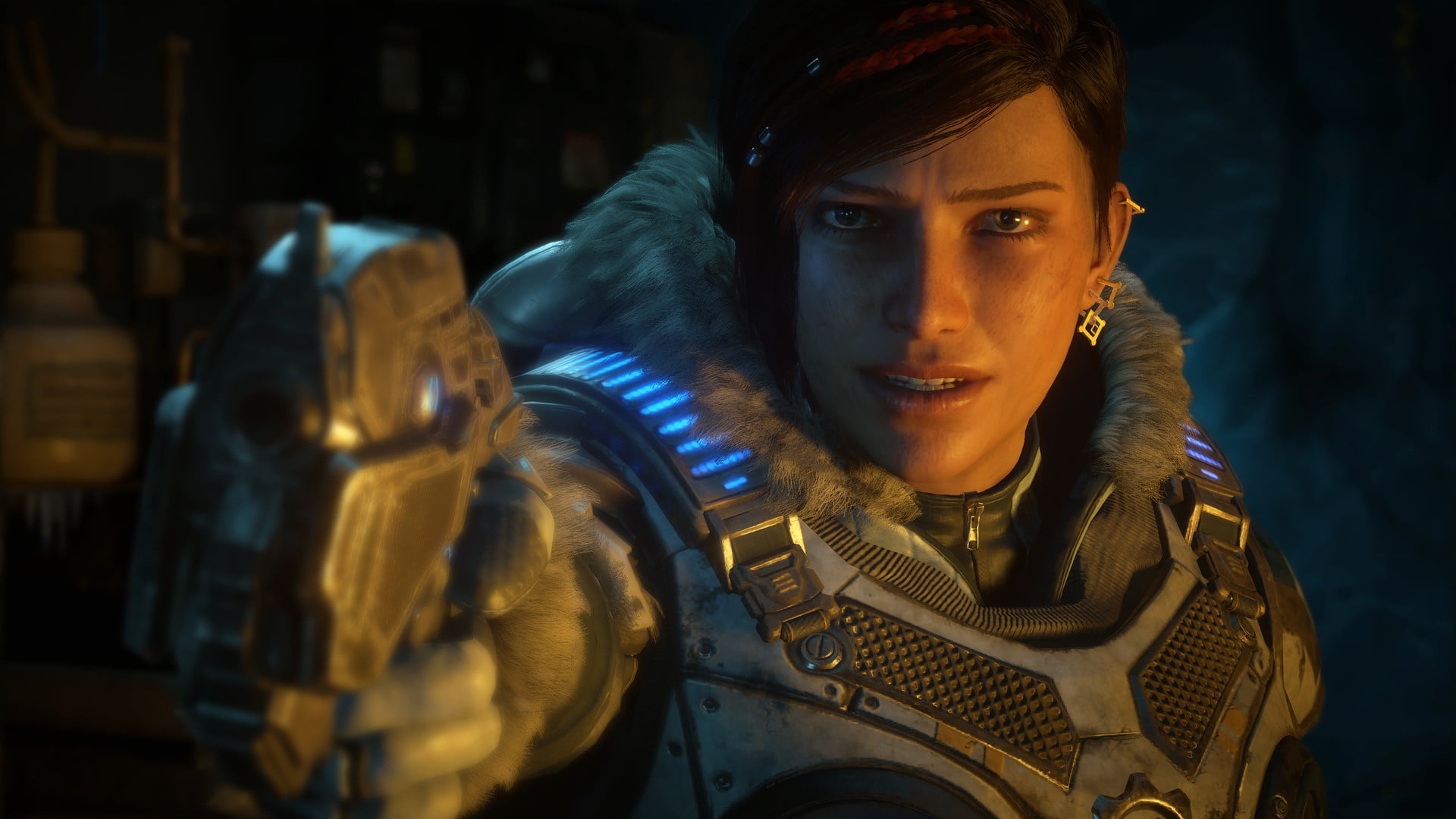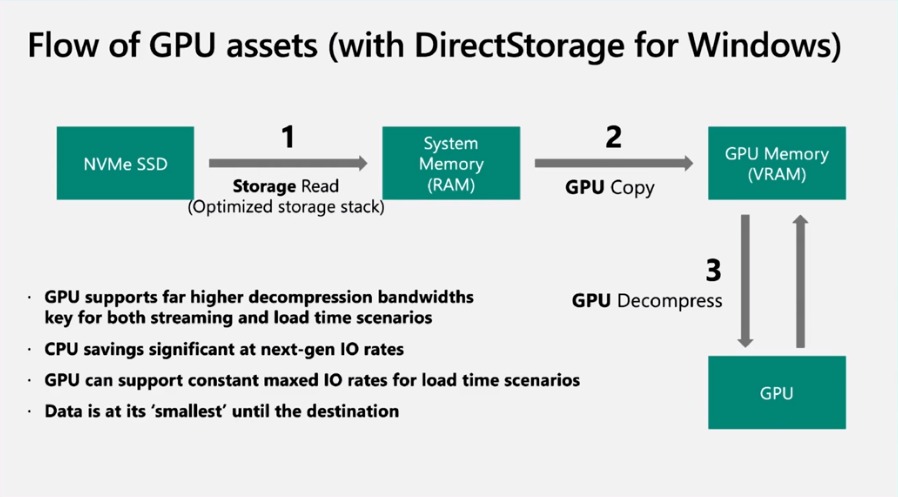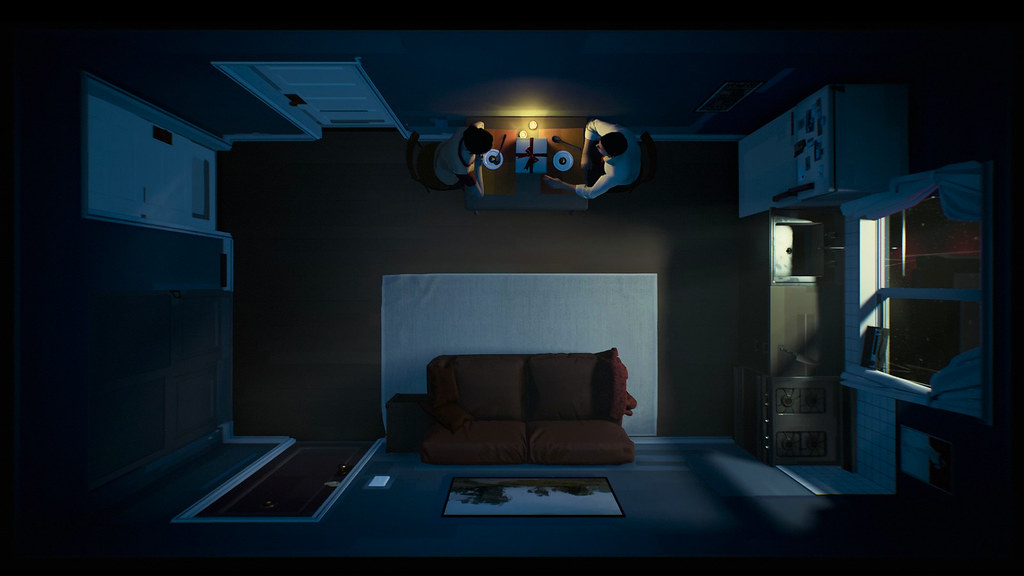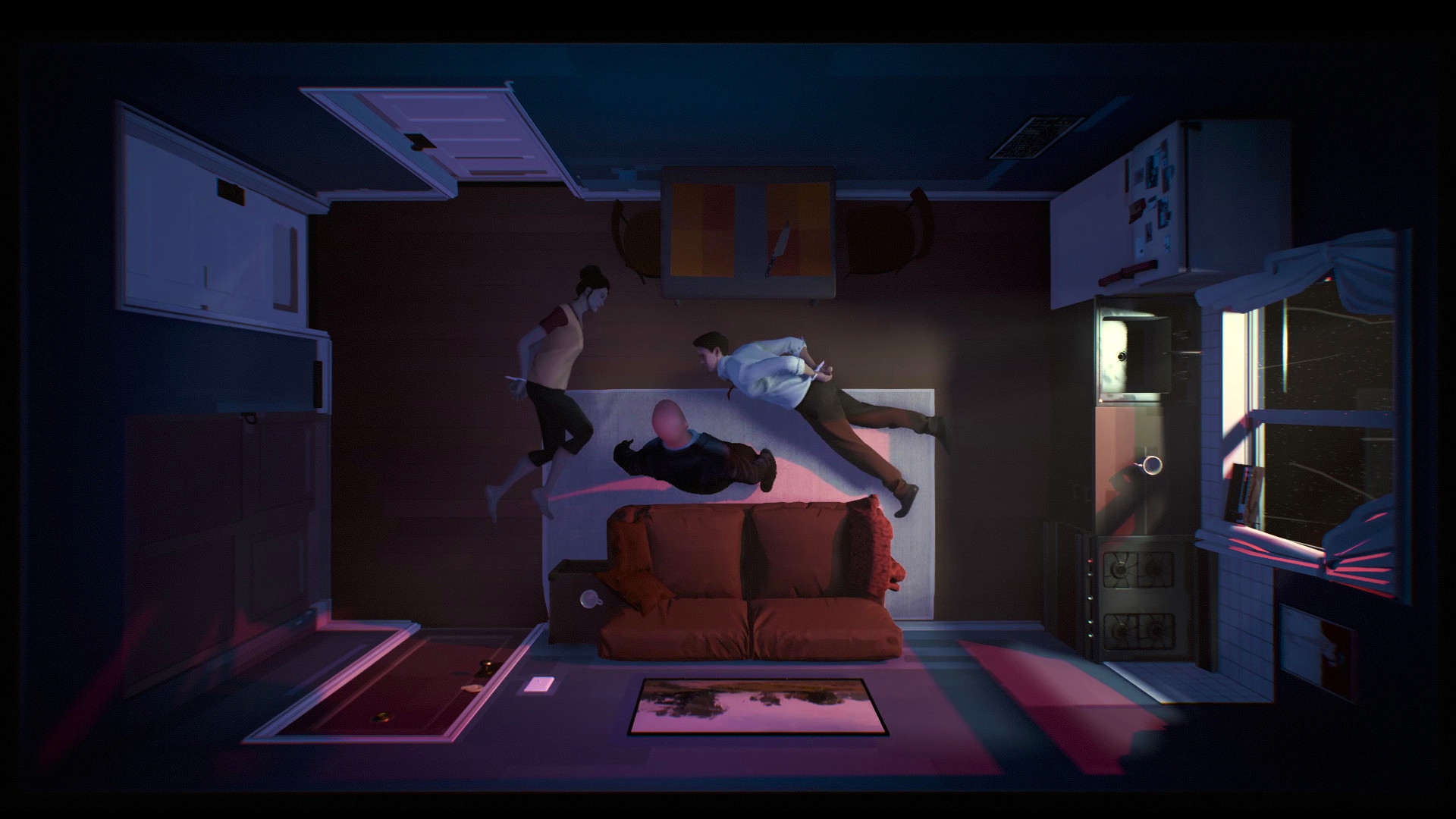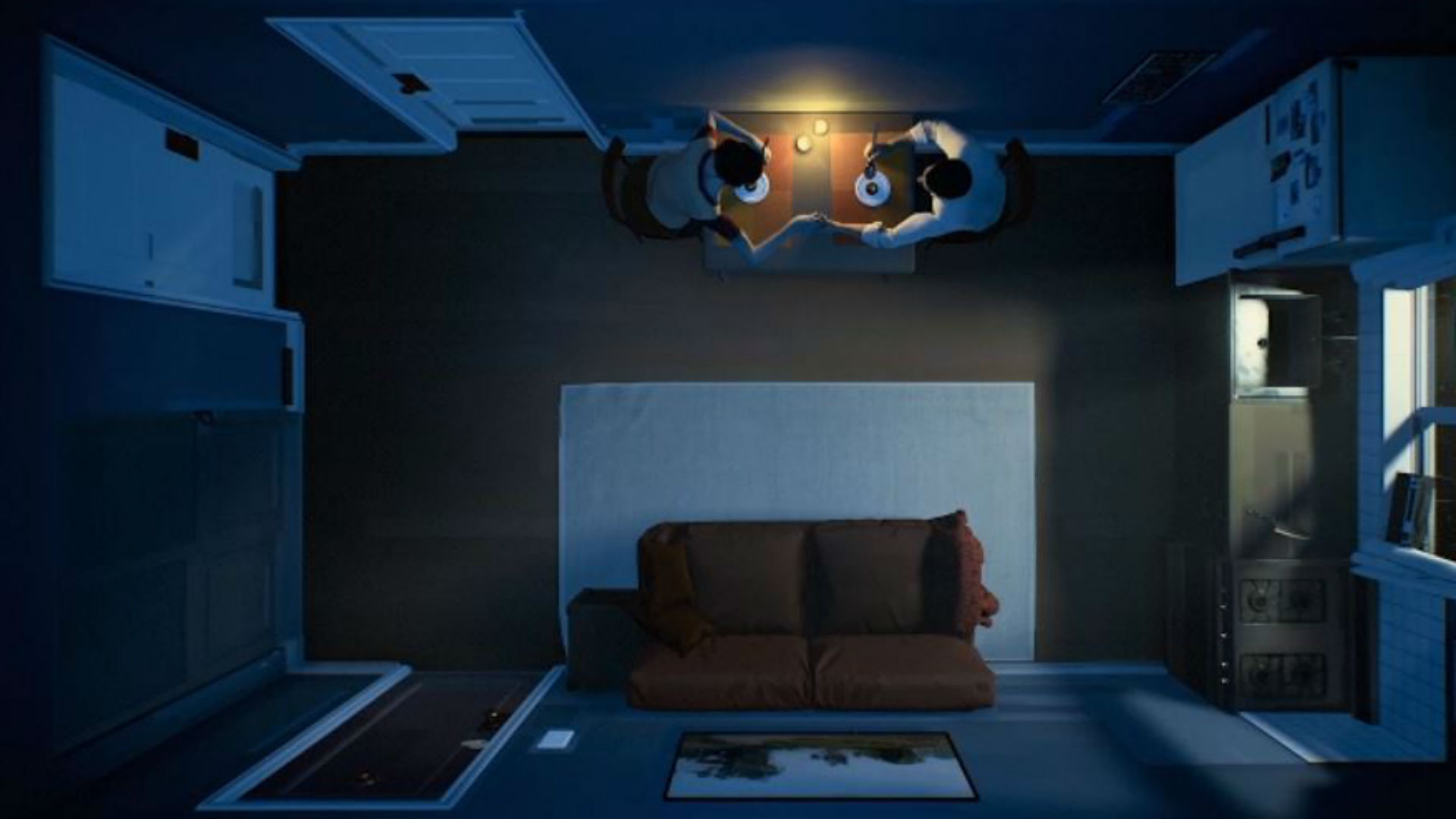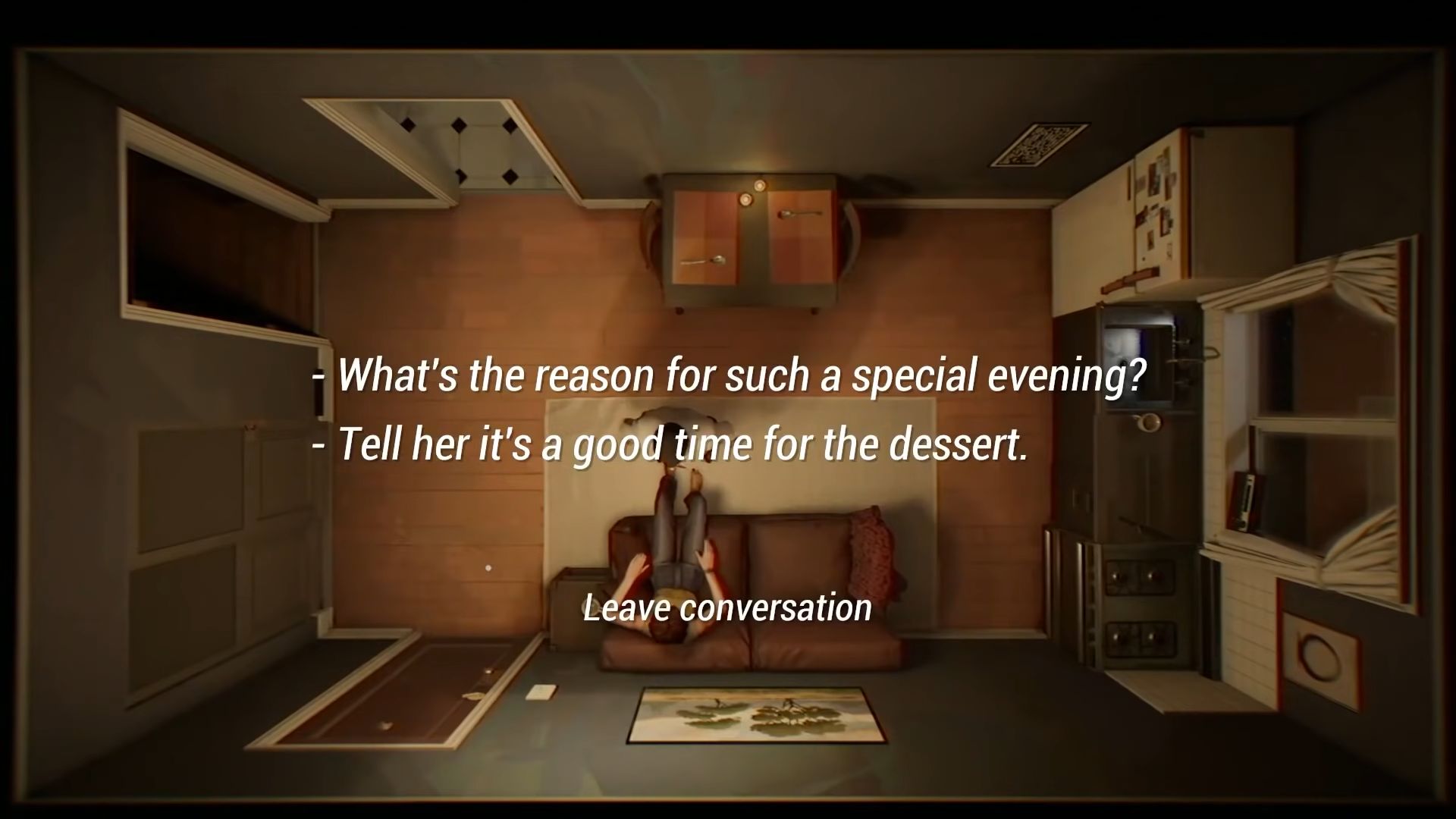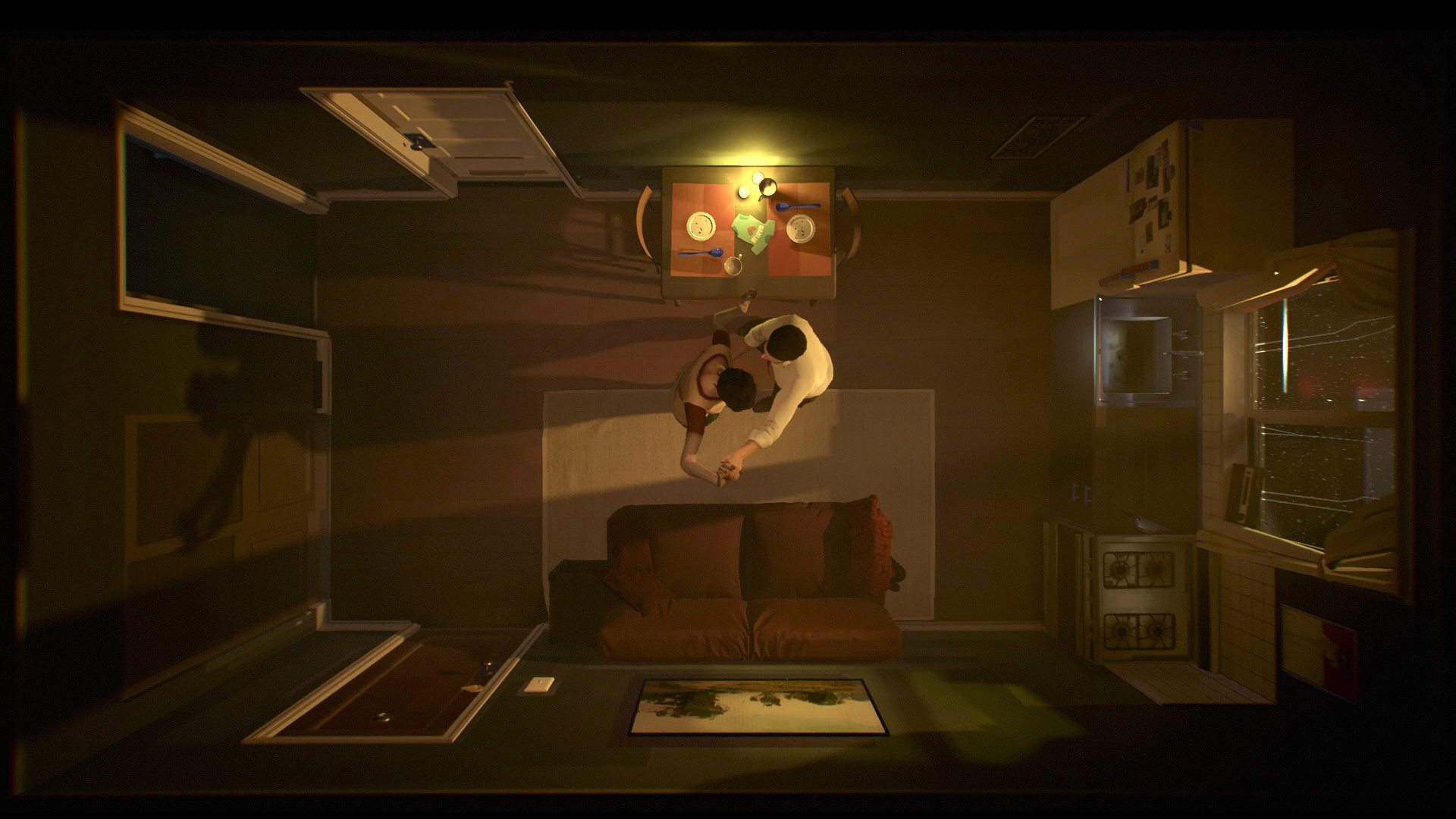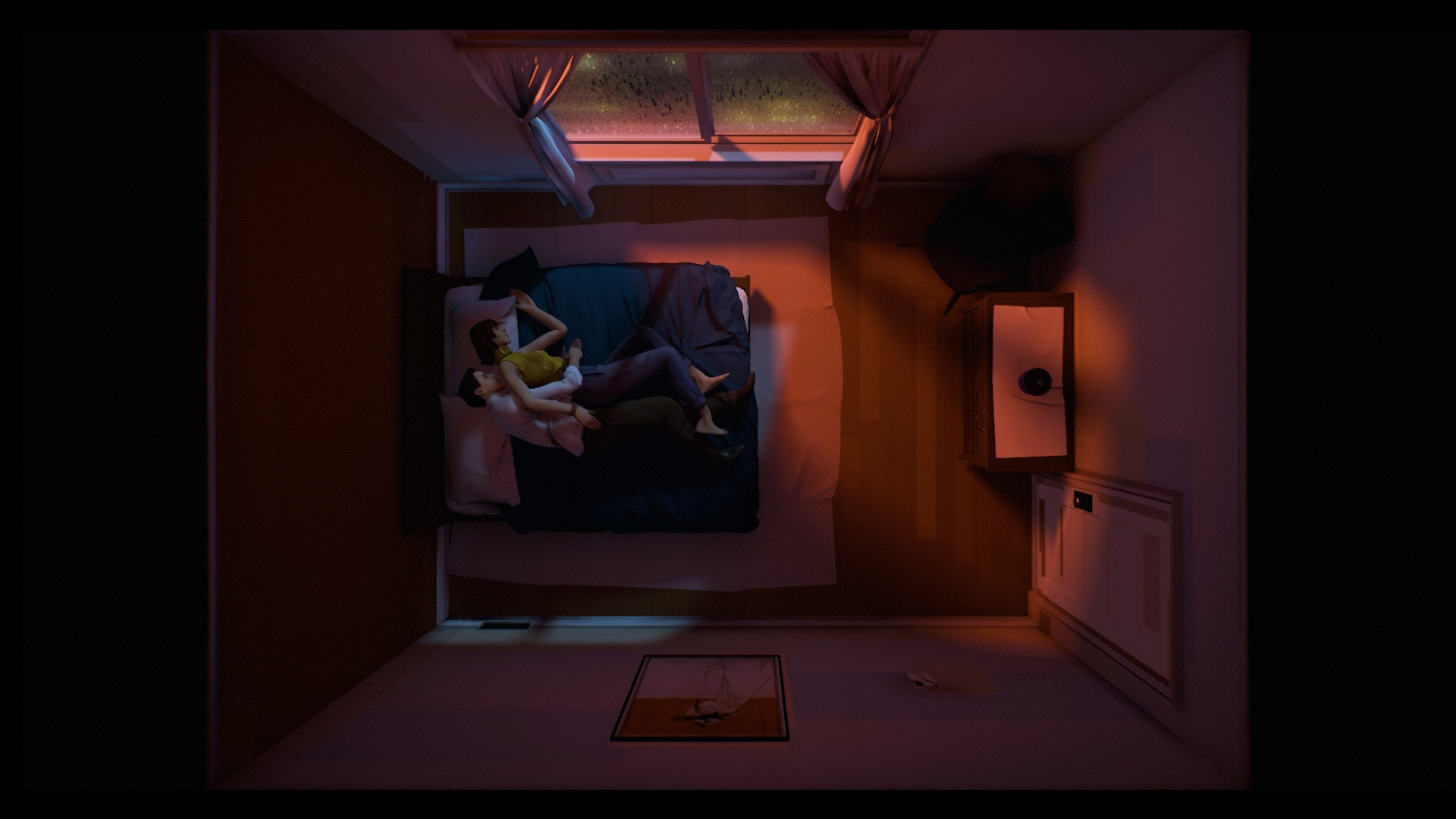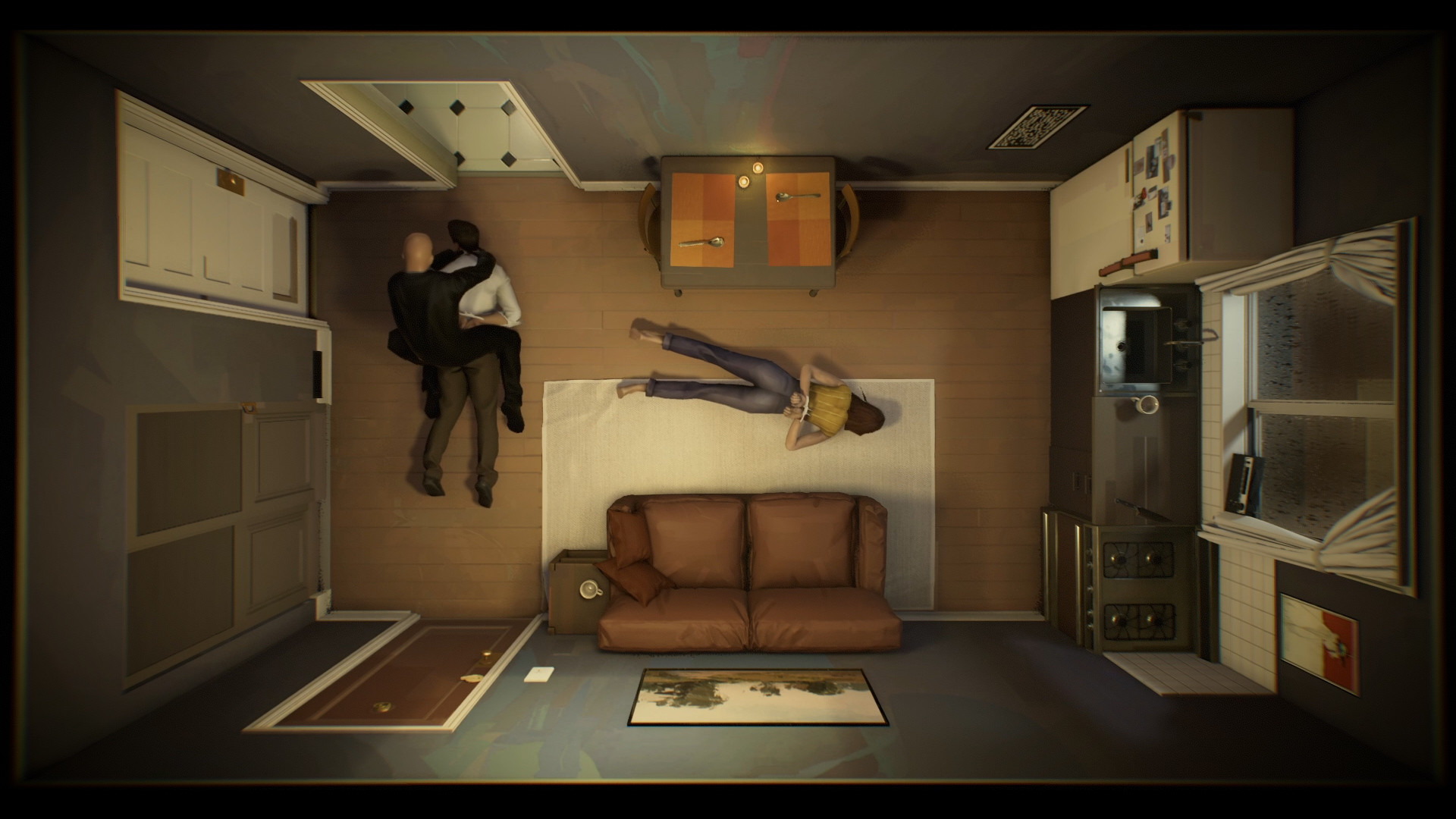Rainbow Six Siege Director Doesn't Think a Sequel is Necessary
Rainbow Six Siege is, without the shadow of doubt, one of the biggest money-makers for Ubisoft right now. With millions upon millions of players – a number that just keeps on growing and shows no signs of stopping – the game has only gone from strength to strength on a consistent basis in all the years since its launch. But of course, there are those who wonder- will there be a sequel for the game any time soon?
Well, the game's developers at Ubisoft definitely don't want that. In response to a question in a Reddit AMA, Rainbow Six Siege creative director Leroy Athanassof said that making a sequel to the shooter isn't something the development team wants to do, and they would much rather just keep working on the game's existing framework and keep on expanding it and improving it with persistent updates, the way they have been doing for years.
"Siege is an evolving game," Athanassof wrote. "The Siege of the future will be dramatically different from today's Siege, to the point where we could call it Siege 2. However, as a team, we strongly believe we can bring about these changes in an incremental way, within the current Siege framework.
"Siege 2 would mean a new game, a new environment, probably a new inventory and maybe a new dev team. We do not feel that this is what is needed for the community. We care about your investment in the game, we do not want to move to a new one. Instead, we want to protect your investment and increase its value it by making your current 'home' (which is SIEGE) even better. It's like renovations to your old house to make it up to date, shiny and appealing."
This definitely isn't the first time the shooter's developers have said that they have no plans to work on a sequel for Rainbow Six Siege. Considering its massive and persistent success, it makes sense that Ubisoft would just want to stick with a live service model for it. It remains to be seen whether the upcoming Rainbow Six Extraction will enjoy similar success.
Rainbow Six Siege is available on PS5, Xbox Series X/S, PS4, Xbox One, and PC. It's getting cross-play and cross-progression support in early 2022.
Windows 11 for Gaming – What Does It Mean For The Players?
PC gaming has been synonymous with Microsoft Windows almost since the very beginning, with the operating system serving as a gateway for all kinds of experiences. Microsoft's support for PC gaming has seen its ups and downs through history. However, it's undergone a resurgence in recent years with the return of several key IPs, the introduction of Game Pass and closer integration with the company's Xbox consoles. It's now looking to take the next big step in its PC support with Windows 11, its latest operating system that features several exclusive features aimed at gaming.
The OS is out later this year and there's still quite a lot to be showcased. Nevertheless, let's take a look at all of its gaming-related features revealed till now.
DirectX 12 Ultimate
DirectX 12 Ultimate, Microsoft's latest graphics API, is included with Windows 11 and has an impressive range of features. This includes Sampler Feedback, Variable Rate Shading, Mesh Shaders and DirectX Raytracing. Ray tracing is one of the biggest graphical buzzwords for current gen titles – and for good reason – but DirectX Raytracing 1.1 goes even further. It allows for more efficient loading of ray tracing shaders depending on the demand, like when the player encounters new objects in the world, while inline raytracing offers better performance for scenes with less shaders.
Variable Rate Shading allows certain scenes to look better while optimizing others for improved performance by leveraging the GPU more or less depending on the requirement. Mesh Shaders allow for more detailed environments by having geometry processing work more like compute shaders, utilizing index buffer compression to cut down on memory bandwidth usage, while Sampler Feedback lets developers load textures when required, improving load times and overall fidelity. But perhaps the best news is that games leveraging DirectX 12 Ultimate can still run on hardware that doesn't have it, offering a greater range of compatibility than before.
AutoHDR
A calling card for the Xbox Series X/S, Auto HDR essentially adds high-dynamic range lighting to games, even if they don't support it. This allows certain older titles to have a greater brightness and color range than before, thus enhancing the overall visuals without extensive work from the developer's side. Windows 11 will support Auto HDR on titles developed for DirectX 11 onwards, thus allowing PC players to experience older titles in a new light.
More than 1000 titles will have Auto HDR support and though Microsoft hasn't provided a complete list, titles like DayZ, Rocket League, and so on have been confirmed. It should be interesting to see how older PC titles – and even those that don't currently support HDR, like Valheim – benefit from it. Of course, you'll need a monitor that supports HDR to take advantage of it.
DirectStorage
Another feature introduced with Xbox Series X/S is DirectStorage, an API that allow for vastly improved draw distance and asset generation while cutting down dramatically on load times and CPU utilization. It requires an NVMe SSD though, one with the Standard NVM Express Controller driver, a DirectX 12-compatible GPU and Shader Model 6.0 support. The games in question must also be designed to take advantage of DirectStorage so not every game will automatically benefit from it. At any rate, a solid state drive is becoming more and more vital for current-gen gaming on PC and should work wonders in conjunction with DirectStorage.
Redesigned Microsoft Store
With a new Windows OS also comes a revamped Microsoft Store with both Windows 10 and 11 users able to benefit from it. The Microsoft Store has long been criticized for its overall design and feature set, and Microsoft has taken feedback into account with the revamp. Some of its newest features include curated stories that will provide information on unknown apps; the ability to run Android apps, including mobile titles (though since this is through Amazon's app store, not every single app will be available; and much more freedom for developers to publish an app on the store, whether it's .NET framework, Java, Electron, Win32 and so on. The result should be a more open storefront with more choices.
Xbox App Integration
The PC gaming push wouldn't be complete without the Xbox app and in Windows 11, it's being directly integrated into the operating system. This also means that you can access Xbox Game Pass for PC in a more seamless fashion. Considering the extensive library on offer and numerous titles like Halo Infinite, and more coming to the service at launch, it's a pretty good deal. Of course, the other selling point will be Xbox Cloud Gaming via one's browser. It's available now for Xbox Game Pass Ultimate subscribers on PC but combined with Windows 11's dedicated features, one can enjoy titles at incredible fidelity even without the most powerful hardware. That is, with a good enough internet connection, of course.
Accessory and Peripheral Support

Microsoft has been touting a "universal" approach to its devices on Xbox for a while now. For example, an Xbox One controller can be used when playing Xbox Series X/S games and several peripherals like headsets also carry over between the two systems. This same approach is being applied to Windows 11. Regardless of your hardware, be it keyboards, gaming mice, the Xbox Series X/S and Adaptive Controllers, or external GPUs, Microsoft is promising support for "millions" of gaming peripherals and accessories. It may be one of the more expected features but being able have one's dedicated gaming controllers work without any hiccups going into the next generation is nice.
System Requirements
So with all of the new and exciting features that Windows 11 has to offer, the question is: Will you be able to run it? The answer is…complicated. In its official system requirements, Microsoft has specified a 1 GHz or faster CPU with two or more cores, 4 GB of RAM, 64 GB of space and a DirectX 12 compatible GPU with WDDM 2.0. The kicker is that certain CPUs, like the Ryzen 1000 series and 7th gen Intel CPUs, are not supported.
Your system firmware must also support Trusted Platform Module (TPM) version 2.0. It's not fully clear at this point whether some configurations which go above and beyond the stated requirements, despite not being on the list of supported CPUs, will be able to run the OS or not. Regardless, as stated previously, certain features like AutoHDR, DirectStorage and DirectX 12 Ultimate require compatible hardware to utilize.
More details are still needed from Microsoft on hardware requirements but one thing is for sure – almost all of the gaming-exclusive features on Windows 11 will be exclusive to the OS (though Microsoft has confirmed that DirectStorage is also coming to Windows 10). It's a shame, for sure, but at least the latter will be supported until October 2025.
"Microsoft Actually Cares About the Indie Market" – Replaced Developer
It's hard not to take note of how indie-friendly Xbox has become as a platform over the years, and based on the lineup of indie-developed games coming to Xbox over the next few months and years, it's clear that that's something that Microsoft is going to continue to emphasize. One such promising-looking indie game coming to Xbox soon is sci-fi platformer Replaced, and with Twinfinite the game's developers spoke about working with Microsoft.
In particular, Replaced developer Sad Cat Studio co-founder Igor Gritsay's comments stand out in context of recent reports of how tough most indie developers have found working with Sony. Gritsay remarks that Microsoft "actually cares about the indie market", and that from his perspective, there isn't any downside to partnering with Microsoft where an indie developer is concerned owing to the "funding and marketing reach" they provide.
"The biggest part of the partnership for us is that Microsoft actually cares about the indie market," Gritsay said. "Otherwise, well, there would be much fewer games on all platforms. They really give a chance to small studios to actually produce something and provide marketing awareness to people. I would say that for indie studios, I can't even think of a con (with partnering with Microsoft) because they provide funding and marketing reach."
Gritsay also spoke about the merits of Xbox Game Pass, talking about how launching on the service helps smaller titles with everything from accessibility to visibility to sales.
"As for Game Pass, it allows more people to learn about the game, and actually play the game," Gritsay said. "Because there is frequently this situation for many players where they will see a game in the store and they want it, but at the same time it is $30, $60, or even more, and so you maybe Wishlist it, and then you usually forget."
"However, with Game Pass you just press a button and install. Of course, sometimes the possible con of this is that, you know, people might be too overflowing with games and so each game gets less attention. Still, equally, it is a chance for those games to shine. In other situations they might otherwise be drowned by thousands of other games. Game Pass allows us and many other developers to actually deliver our project to people. Also, from what I heard, Game Pass also boosts sales, but we'll see about that! To summarize, it's a win, win situation for us."
Replaced is set to launch some time in 2022 for Xbox Series X/S, Xbox One, and PC- and yes, it will be available via Xbox Game Pass via launch.
11 Biggest Game Worlds in PlayStation Exclusives
When it comes to video games, bigger doesn't necessarily have to mean better- but all too often, it does. PlayStation exclusives have always succeeded on multiple fronts, from gameplay to storytelling, but as they've gotten bigger, they've become that much more impressive. In this feature, we're going to take a look at some of the biggest game worlds we've ever seen in PlayStation exclusive titles.
MARVEL'S SPIDER-MAN / MARVEL'S SPIDER-MAN: MILES MORALES
Insomniac Games' first crack at an open world in Sunset Overdrive proved that the developer had a knack for this type of game, and then with Marvel's Spider-Man (and, by extension, Miles Morales, which uses the same map), they took things to completely new heights. Spider-Man's Manhattan is the biggest Insomniac map to day by far, and though there isn't much that's inherently special about the world itself from a design standpoint, the game's excellent traversal mechanics pretty much single-handedly elevate it. You get to swing around in a vast open world as Spider-Man, and it feels amazing- what more could you want?
10 Reasons To Look Forward To Twelve Minutes
Between Microsoft's first party titles – like Fable, Perfect Dark and whatnot – and third party games coming exclusively to the platform, there are a good number of interesting Xbox titles coming up. However, one title that's looked intriguing since the very moment it was showcased was Twelve Minutes. The narrative thriller is out on August 19th for PC, Xbox One and Xbox Series X/S along with launching day one on Xbox Game Pass. So what's the deal with Luis Antonio's debut title and what sets it apart from the pack?
Story Set-up
The first thing to note is the story set-up. All events take place within the confines of a single apartment where a man and his wife are living. As time passes, the two have dinner and the man learns that his wife is pregnant. However, their celebration is interrupted by a knocking at the door, which leads to a police officer entering and restraining the two. As the man is knocked out and his wife seemingly killed, there's a core mystery to find out what exactly is going on. What prompted these events?
Time Loop
Of course, the game doesn't end there. The man finds himself back at the beginning, trapped in a time loop. The same events begin to unfold again and within the same 12 minutes, he'll have to confront the same police officer. However, this could also be an opportunity to set things right and save his wife and their unborn child.
No Clear Goal
While preventing his wife's murder is one goal, there is certainly a lot more to the story of Twelve Minutes than meets the eye. As the initial reveal trailer showcased, the wife is accused of murdering her father. Why is the police officer playing judge, jury and executioner? Is the player's goal to stop her from being murdered? To kill the officer? To solve the mystery of the murder and prove her innocence? Or to break out of the loop? Why have only the past 12 minutes been looping? What are the conditions for the loop?
Experimentation
The player is free to try all sorts of things and the game will react accordingly. These could range from getting a cup of water for the wife and having a conversation about dessert to attacking the officer with a knife when you get the chance (or even taking the knife, hiding in the bathroom and striking when the opportunity arises). The reveal trailer also pointed towards a number of other scenarios, like hiding in the bathroom with the woman which can lead to the officer finding them there. If you don't lock the door beforehand, then the officer will burst into the apartment that much more easily.
Dialogue Choices
Experimentation and trying different choices is key but even if this is the same scenario on repeat, you're learning more and more new information. With each new cycle, you can use that information to try and impact the plot. This is manifested in the form of dialogue choices based on what you've experienced already. After looping once, the player gains a range of options, from telling the woman that it feels like the same day, informing her about the cop or even asking about her past. You can then try to prove that the day is restarting (and no, telling the wife that she's thirsty based on the previous instance of giving her water won't work) or go into more detail. Different decisions will likely open up different dialogue choices so you're encouraged to play around and see what's subsequently unlocked.
The Clock is Ticking
One of the many unique things about Twelve Minutes is that, like Outer Wilds, the clock is always ticking. You need to come up with something, anything within that time-span before the loop is reset. This could mean saying or doing different things at specific times, lest you miss the window of opportunity and have to start over. It gives a real sense of urgency to the proceedings while also making them feel more dynamic – what will each decision lead to and how will it impact the overall story? It's up to the player to find out.
Top-Down Perspective
Another unique twist is in the perspective. The action unfolds from a top-down perspective, providing a full view of the apartment at all times. Gameplay-wise, this means that you can easily scan the different items available. Aesthetically, there is a bit of detachment from the main characters especially since you can't really see their faces and expressions most of the time. But due to the size of the apartment, it's almost like watching a stage play unfold while simultaneously having your actions influence the direction. It's unique, at least for this kind of personal narrative, and fits the overall mechanics of the time loop well.
Film Influences
When talking about inspirations, it's key to bring up movies like Groundhog Day where the protagonist is also trying to escape a time loop. As it turns out though, a number of films have served as inspiration for Twelve Minutes including Memento, Rear Window and The Shining. The design is heavily inspired by the work of Stanley Kubrick along with Alfred Hitchcock and David Fincher, to the extent that the official poster by mOcean pays homage to them. There is a definite sense of each film-maker's work in Twelve Minutes, whether it's the harrowing sense of doom inherent in Hitchcock's work or the auteur theory of Kubrick.
Minimal, Focused Scope
Though players will be playing through a 12 minute loop multiple times, creator Luis Antonio estimated a total playtime of about six to eight hours. The original goal was to set the game in a neighborhood over a 24 hour period but the overall scope proved to be too large so the location and time was scaled back. Besides, while there have been a number of time looping titles that take place over a period of hours or even days, Twelve Minutes is one of the few that unfolds in real time, each time, over a relatively shorter span.
This overall focus on a more minimalist design extends to the gameplay – originally, there were timepieces that would help the player anticipate what was coming next. However, these were subsequently removed to keep the focus on the conversations and keeping track of details learned therein (which the small size of the apartment also helps with).
All-Star Cast
Despite the scale, there's a lot of work that goes into a story like this. Motion capture for the characters and full voice-acting is included but surprisingly, Twelve Minutes has a star-studded cast. It includes James McAvoy of Split and X-Men fame voicing the man; Daisy Ridley of Star Wars voicing the woman; and Willem Dafoe, whose range includes Spider-Man, Finding Nemo and John Wick, as the police officer. The stage play comparison feels all the more apt, except it's with high-profile actors flexing their range and talents over a dynamically evolving tale.
Halo Infinite Multiplayer's First Technical Preview Could be Coming Very Soon
343 Industries confirmed following Halo Infinite's multiplayer reveal at E3 that the first of the game's betas (or technical previews) would be launching this Summer. Over the last couple of weeks, the developer has said on multiple occasions that more details on the technical previews are going to be coming soon, and now, it seems like we're getting closer to when it actually launches.
In the most recent Halo Insider blog post, 343 Industries said that while the studio still hasn't nailed down the exact date for when the first technical preview will go live, based on how things are developing right now, the beta – which will be focused on bots – might go live as early as next weekend.
"The release of this blog means we're getting very close but flighting itself is a fluid process, we need to ensure we've successfully cleared our final gate before we're officially a go," the blog reads. "That said, we've been given the okay to say our first Bot-focused technical preview could happen as soon as next weekend. Prior to the flight starting, we're planning a live stream where we'll dive into the actual build and walk through nearly every facet of the technical preview. Stay tuned."
Halo Infinite is due out this Holiday for Xbox Series X/S, Xbox One, and PC. An exact release date is yet to be nailed down, but 343 Industries is apparently committed to hitting that launch window. Rumours suggest the game could launch in November.
Dead Space Remake Development Team Consists of Former Ubisoft, BioWare Devs
EA recently announced a remake of Dead Space, with EA Motive bringing back the beloved survival horror classic with a ground-up reimagining. It's still early in development right now, which means that there's much about the game that we don't yet know (and probably won't for some time yet), but we do at least have a bit of an idea of the people that comprise the game's development team at this stage, thanks to an analysis done by VGC.
For starters, several of EA Motive's own developers are, of course, are working on the remake, having jumped straight to it after wrapping up work on last year's Star Wars: Squadrons, including development manager Alma Talbot, senior environment artist Xavier Perreault, and senior lighting artist Mathieu Tétrault. Interestingly enough, there's at least one former Dead Space developer who's working on the remake as well- art director Mike Yazijian, who worked on Dead Space 2 (and also on Batman: Arkham Origins and Motive's own Star Wars: Squadrons).
Several former Ubisoft developers are also on the Dead Space team. Creative director Roman Campos-Oriola, for instance, was the creative director of For Honor, and also the lead designer on games such as Ghost Recon: Future Soldier and Red Steel and its sequel. Then there's senior producer Philippe Ducharme, who, at Ubisoft, worked on Assassin's Creed 3, Assassin's Creed Unity, Far Cry 5, and Watch Dogs: Legion. UX designer Jessica Maher and senior technical designers Daphney Alarie and Shadi Mallak have all also worked on Assassin's Creed games during their own stints at Ubisoft.
Meanwhile, several former BioWare developer are also working on the Dead Space remake, such as lead level designer Gary Stewart (who worked on the Mass Effect series), senior 3D environment artist Alexis Dumas (who worked on Mass Effect: Andromeda, and has worked on Star Wars: Battlefront 2 and Squadrons at Motive), and gameplay tech lead Pierre-Vincent Bélisle (who worked on Mass Effect: Andromeda, and joined EA Motive towards the end of Star Wars: Squadrons' development).
Other notable names in the remake's development team so far include senior gameplay animator Stephen Yu (who worked on Batman: Arkham Knight and Sleeping Dogs), senior technical artist Robin Bonhoure (formerly of Ubisoft until February of last year), and senior VFX artist Maximilien Faubert (who worked on Shadow of the Tomb Raider at Eidos Montreal).
Dead Space is in development for PS5, Xbox Series X/S, and PC. It currently does not have a release date.
Steam Deck Games Have "Consistently Met and Exceeded" Valve's 30 FPS Target in Testing
While the Steam Deck's technical specs have mostly been received with widespread praise, one aspect of the device that a few have been skeptical about is its frame rate, with Valve recently having said that it will be targeting 30 FPS performance in games running on the system. However, it seems you needn't worry.
Valve designer Pierre-Loup Griffais recently took to Twitter and clarified the above statement, stating that the 30 FPS target for the Steam Deck is "the floor" of what Valve has considered acceptable while playtesting games- in other words, it's the minimum. According to Griffais, games have "consistently met and exceeded" that target during testing. Meanwhile, he also adds that players will also be able to use FPS limiters to decide whether they want better performance in games or better battery life for the device itself.
With impressive specs, support for ray tracing and variable rate shading, user upgradable SSDs, and more, the Steam Deck has certainly impressed people with its technical aspects. Valve has also said that in all the time it has spent testing games from the Steam library on the Steam Deck, it hasn't been able to find something that the device cannot handle- which is certainly cause for optimism.
The "30 FPS target" refers to the floor of what we consider playable in our performance testing; games we've tested and shown have consistently met and exceeded that bar so far. There will also be an optional built-in FPS limiter to fine-tune perf vs. battery life.
— Pierre-Loup Griffais (@Plagman2) July 25, 2021
Steam Deck and Switch Are Going After Different Audiences – Valve
It's in our nature to start comparing new devices on the market against those that we perceive as its competition, and of course, the Steam Deck, too, has been compared with all the major consoles in the industry. The one that it seems to be pitted against most often is the Nintendo Switch, not only because of its form factor, but also because, in the absence of the long-rumoured Switch Pro announcement, the Steam Deck seems to be doing things that many feel the Switch should do.
But according to Valve, they haven't set out to compete against Nintendo's hybrid system at all. Speaking with IGN, Valve designer Greg Coomer said that with the Steam Deck, Valve is targeting core audiences who are already invested in Steam, rather than looking to capture the Switch audience, and any similarities between the two device's form factors don't really indicate any desire for competition.
"We tried to make all the decisions really in Steam Deck that targeted that audience and that served the customers that were already having a good time interacting with the games that are on that platform, on our platform," Coomer said. "That really was how we were making our decisions. We've ended up with a device that cosmetically shares some traits with a Switch, but that just was… it's kind of an artifact of how we've proceeded down the design direction."
Meanwhile, Valve CEO Gabe Newell also chimed in with a similar statement, saying that the two devices are going after completely different audiences, and that that's going to be instantly apparent in several ways.
"I think Nintendo does a great job targeting the audience they do with the content that they have," Newell said. "And that's going to be different. Like when you pick this up, it feels much more like the ergonomics for somebody who's used to playing with an expensive game controller, right? Because it's bigger and it's bulkier than a Switch. And if we're right, that's the right trade-off to be making for the audience that we're going after."
He added: "Let me put it this way: if you're a gamer, and you pick up a Switch, and you pick up one of these, you're going to know which one is right for you, right? And you're going to know it within 10 seconds."
One look at the Steam Deck's specs (or even its price) is enough to tell you that it really isn't attempting to go after the same crowd that the Switch does. With its SSD, features such as ray-tracing, and more, it's clear that the design philosophies behind the two devices differ in some fundamental ways.
The Steam Deck is out (in some regions) this December, and Valve has grand ambitions for the device's success. Let's see how well it lives up to those expectations.
Forza Horizon 5 Will Detail the Various Biomes of its Open World Tomorrow
Forza Horizon 5 will be arriving in a few months' time, and in the lead-up to its launch, developer Playground Games has been revealing several interesting details about the open world racer on a regular basis. Many of these have come via weekly "Let's Go!" streams, which in past episodes have talked about everything from the game's audio design to the variety of its racing events. The next episode is also set to reveal interesting details.
Taking to Twitter via the official Forza Horizon page, Playground Games recently confirmed that they will be taking a look at the "diverse biomes" of Forza Horizon 5's open world in tomorrow's episode, at 10 AM PT. The variety of biomes that are going to be available in open world Mexico in the game is something the developers have talked about previously, so this should be interesting to see.
Forza Horizon 5 launches on November 9 for Xbox Series X/S, Xbox One, and PC.
This Monday on Episode 4 of Let's ¡Go!, we're taking a look at the diverse biomes to be found in #ForzaHorizon5. Tune in at https://t.co/rXLuDb5sWb! pic.twitter.com/UVZiDorI57
— Forza Horizon (@ForzaHorizon) July 23, 2021
